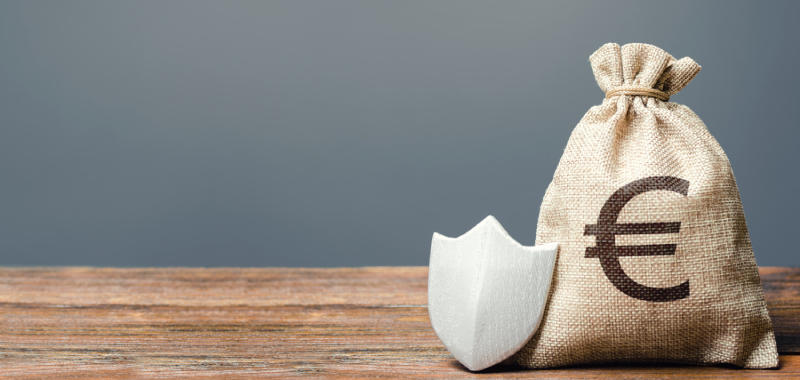
Protecting eCommerce domains and websites from cybersquatting
In the world of e-commerce, the importance of domain names and registered trademarks is indisputable. Both represent the identity and value of an online company. The purpose of this article is to expose the relevance of these elements in the digital field and offer information on how to protect them from cybersquatting.
Domain Names and Trademarks
definitions and Relationship Between Domain Names and Registered Trademarks
A domain name is the unique and exclusive address that identifies a website on the internet. On the other hand, a registered trademark is a distinctive sign that protects the name, logo or symbol of a company, distinguishing it from its competitors.
There is a close relationship between domain names and registered trademarks, as both act as identifiers of a company in the digital environment. In many cases, companies choose domain names that coincide with their registered trademarks to ensure clear and easy identification by consumers. This is fundamental in the world of e-commerce.
Spanish Legislation Applicable to Domain Names and Trademarks
In Spain, Law 17/2001 of 7 December, on Trademarks, regulates both registered trademarks and domain names. This legislation establishes the rules and requirements for registering trademarks and protecting the rights of holders against possible infringements and abuses.
Conflict Between Domain Names and Registered Trademarks and How to Address Them
Conflicts can arise when a third party registers a domain name identical or similar to a registered trademark, which can generate confusion among consumers and cause damage to the trademark holder.
In the case of e-commerce, this problem is even more complicated because their operations take place within the network. And, as already mentioned, they depend on their digital identity to ensure their recognition and the successful development of their operations.
En el caso de los e-commerce este problema se complica aún más porque sus operaciones se desarrollan dentro de la red. Y, como ya he dicho, dependen de su identidad digital para asegurar su reconocimiento y el desarrollo exitoso de sus operaciones.
However, to resolve these conflicts, trademark holders can resort to different mechanisms such as mediation, arbitration or ordinary courts. They can also resort to specific procedures derived from the Uniform Domain-Name Dispute-Resolution Policy (UDRP) of the ICANN.
Cybersquatting, What It Is and Its Consequences
Cybersquatting and Its Different Forms
The practice of registering, selling or using a domain name in order to obtain an economic benefit at the expense of a registered trademark is called cybersquatting. And it can occur in two ways: typo-squatting, consisting of registering domains with typographical errors, and brand-squatting, which occurs when domains that include recognized brands are registered.
While typo-squatting takes advantage of traffic generated by human error, brand-squatting sometimes takes advantage of the appearance of connection with the reputed brand it approaches. In other cases, brand-squatting doesn’t even seek to use the domain, but only to resell it to the legitimate holder of the brand object of the cybersquatting.
Regulation and Procedures to Combat Cybersquatting
There is a special mechanism for resolving disputes related to these practices: the Uniform Domain-Name Dispute-Resolution Policy (UDRP) of the ICANN. Within this procedure, an administrative group of experts will decide within 60 days whether to cancel or maintain the controversial domain name.
This procedure can be carried out in parallel with a judicial procedure. In Spain, in addition, ordinary legal procedures can be followed to protect and enforce trademark rights.
How Can an E-commerce Prevent Cybersquatting and Protect Its Digital Identity?
Proactive Registration of Domain Names and Trademarks
One of the most effective strategies for preventing cybersquatting is to proactively register relevant domain names and trademarks for the e-commerce company. This includes not only the registration of the trademark and the main domain name, but also idiomatic, geographical or sectoral variants that may be of interest.
Monitoring for possible infringements and abuses
It is also important to regularly monitor the use of your identity on the Internet to detect possible infringements and cases of cybersquatting. There are specialized tools and services that can help e-commerce companies monitor the registration and use of domain names similar to their registered trademarks.
Legal and extrajudicial actions to combat cybersquatting and protect copyright
If a case of cybersquatting or trademark infringement is detected, e-commerce companies can take legal and extrajudicial actions to defend their rights. This may include sending cease and desist letters, initiating a domain name dispute resolution procedure (such as UDRP), or, if necessary, resorting to ordinary courts.
Best practices in domain name and trademark management
Adopting best practices in domain name and trademark management can reduce the risk of facing cybersquatting problems. Some of these practices include:
- Using distinctive, non-generic domain names
- Registering trademarks and domain names in multiple extensions and variants
- Renewing domain name and trademark registrations on time
- Implementing appropriate security measures, such as blocking domain transfer from the control panel and two-factor authentication.
Conclusions
Domain names and trademarks are fundamental elements in e-commerce and require adequate protection against infringements and abuses. It is crucial to know the applicable laws and the available dispute resolution mechanisms, as well as to adopt proactive strategies and best practices to minimize risks.
Protecting domain names and trademarks is essential to ensure the reputation and image of an e-commerce company. Preventing and combating cybersquatting is the responsibility of both trademark and domain name holders and competent authorities. This is essential to ensure a safe and fair digital environment for all.

Letslaw es una firma de abogados internacionales especializada en el derecho de los negocios.







